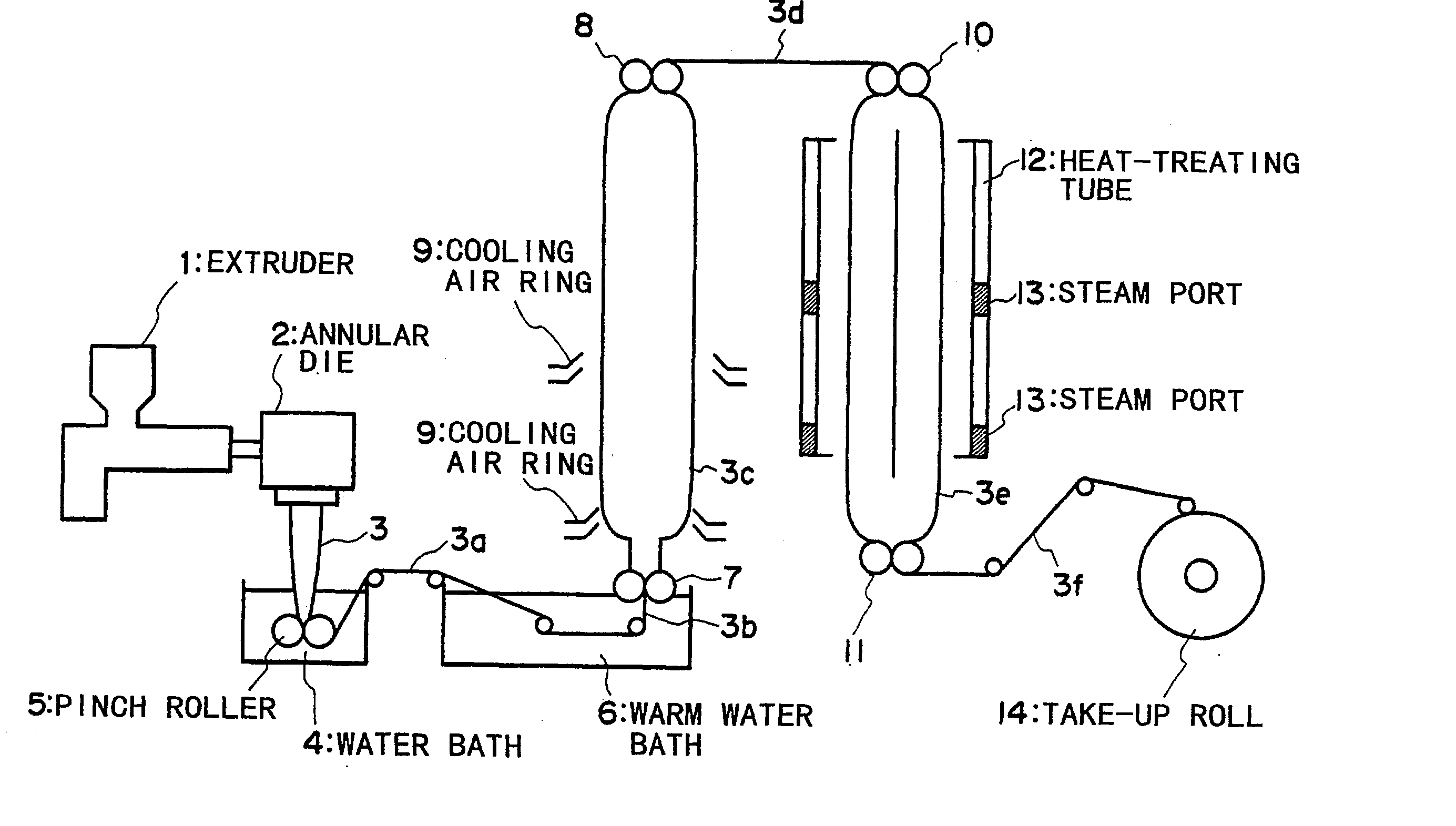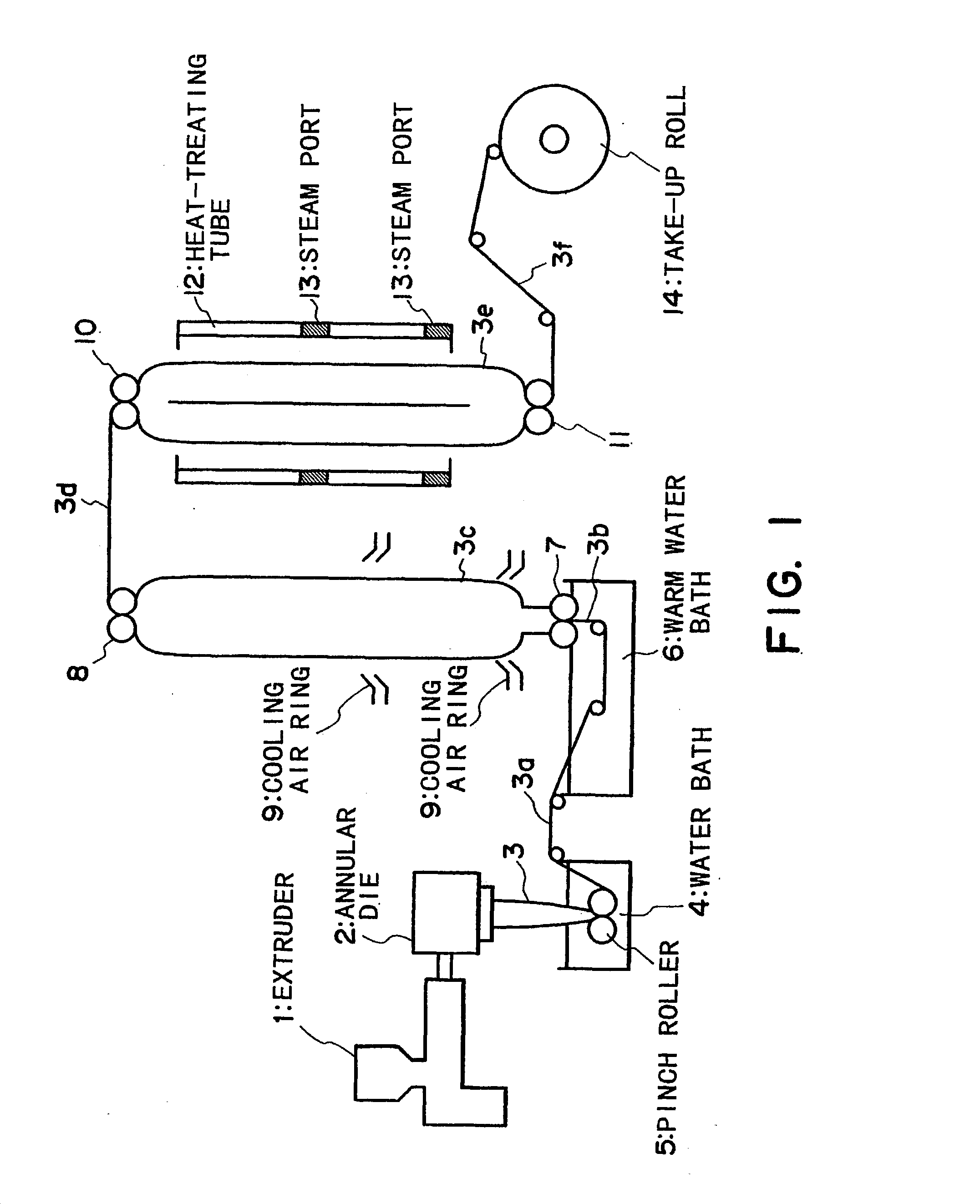Low-temperature impact-resistant polyamide-based stretch-oriented mutilayer film
a polyamide-based, multi-layer film technology, applied in the direction of transportation and packaging, synthetic resin layered products, other domestic articles, etc., can solve the problems of high production cost, high production cost, and difficult secondary processing, and achieve high degree of relaxation, high degree of heat treatment, and improved low-temperature impact resistance
- Summary
- Abstract
- Description
- Claims
- Application Information
AI Technical Summary
Benefits of technology
Problems solved by technology
Method used
Image
Examples
example 1
[0090] By using an apparatus having an arrangement as roughly shown in FIG. 1, a tubular laminate product (parison) having a laminar structure from the outer to the inner layers of PET (3) / mod-VL (2) / NY-1(13) / EVOH (4) / mod-VL (2) / LLDPE (31) with thickness ratios of respective layers indicated in the parentheses was co-extruded by extruding the respective resins through a plurality of extruders 1 (only one being shown) respectively and introducing the melted resins to an annular die 2 to melt-bond the respective layers in the above-described order. The molten parison 3 extruded out of the die 2 was quenched to 10-18.degree. C. by a water bath 4 to form a flat tubular product 3a. Then, the flat tubular product 3a was passed through a warm water bath 6 at 92.degree. C. and formed into a bubble-shaped tubular film 3c, which was then biaxially stretched at ratios of 3.4 times in MD and 3.4 times in TD by the inflation process while being cooled with cooling air at 15-20.degree. C. from an...
examples 2-15
and Comparative Examples 1, 2, 4, 5 and 7
[0092] Various multilayer films were prepared in similar manners as in Example 1 except that the laminar structures and film production (stretching-relaxation) conditions were respectively changed as shown in Tables 2 to 4.
PUM
| Property | Measurement | Unit |
|---|---|---|
| Temperature | aaaaa | aaaaa |
| Angle | aaaaa | aaaaa |
| Angle | aaaaa | aaaaa |
Abstract
Description
Claims
Application Information
 Login to View More
Login to View More - R&D
- Intellectual Property
- Life Sciences
- Materials
- Tech Scout
- Unparalleled Data Quality
- Higher Quality Content
- 60% Fewer Hallucinations
Browse by: Latest US Patents, China's latest patents, Technical Efficacy Thesaurus, Application Domain, Technology Topic, Popular Technical Reports.
© 2025 PatSnap. All rights reserved.Legal|Privacy policy|Modern Slavery Act Transparency Statement|Sitemap|About US| Contact US: help@patsnap.com


